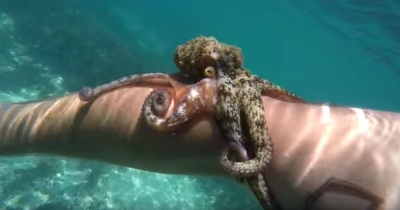
Most long, thin-bodied animals are called ‘worms’, but they are not all closely related. Roundworms are the most common type of worm. At least 15,000 different types of roundworm have been described, and there could be as many as 500,000 species altogether. Many roundworms live in the soil, and there may be millions in one cubic metre of soil. They feed on dead and decaying material. Other worms are predators or parasites, which live inside the bodies of other animals.
Worms are found in almost any damp environment. Some marine worms live in tubes made of sand, sieving the water with flower-like tentacles. Leeches are aquatic worms that may such blood. Most leeches are aquatic, but some live in tropical rainforests and wait on the surface of the vegetation until they can attach themselves to a passer-by. They drop off after feeding.
Picture credit: google














